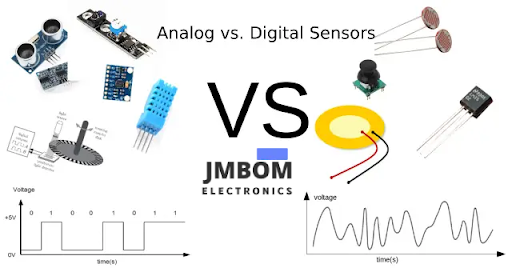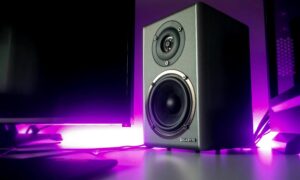Analog and digital sensors are both widely used in various applications, but they have distinct characteristics and advantages. Here is a detailed comparison between them:
Analog vs digital sensors
Signal Output
Analog Sensors: Output continuous signals that directly reflect the measured physical quantity. For example, an analog temperature sensor might output a voltage that varies continuously with temperature.
Digital Sensors: Output discrete digital signals, usually in binary form. For instance, a digital temperature sensor might output a series of bits representing the temperature value.
Accuracy and Precision
Analog Sensors: Can detect subtle variations and provide high sensitivity. However, their accuracy can be affected by noise and interference.
Digital Sensors: Generally offer higher accuracy and are less affected by noise and interference. They can provide precise measurements, especially in complex and high-precision applications.
Resolution
Analog Sensors: Resolution is limited by the sensor and the analog-to-digital converter (ADC) used for processing.
Digital Sensors: Typically have high resolution, often 12-bit, 16-bit, or higher.
Signal Processing
Analog Sensors: Require an external ADC to convert analog signals to digital for processing.
Digital Sensors: Usually integrate an ADC internally, eliminating the need for external conversion.
Transmission Distance and Interference
Analog Sensors: Limited transmission distance and susceptible to electromagnetic interference.
Digital Sensors: Can transmit signals over long distances via serial interfaces like I2C, SPI, or UART, and have strong anti-interference ability.
Interface Complexity
Analog Sensors: Simple interface, typically reading signals through voltage or current changes.
Digital Sensors: Complex interface requiring protocols and standards to read and transmit data.
Power Consumption
Analog Sensors: Usually low power consumption, depending on the specific circuit design.
Digital Sensors: May consume more power due to integrated circuits and processing functions.
Cost
Analog Sensors: Generally cheaper, suitable for simple and low-cost applications.
Digital Sensors: Typically more expensive but offer advantages in accuracy and reliability.
Calibration
Analog Sensors: May require frequent calibration to maintain accuracy.
Digital Sensors: Usually calibrated at the factory and require less frequent calibration.
Response Time
Analog Sensors: Short response time, suitable for measuring rapidly changing signals.
Digital Sensors: Response time may be longer due to data processing and conversion.
Applications
Analog Sensors: Commonly used in traditional measurement systems, such as industrial boilers, furnaces, chemical equipment, and audio equipment.
Digital Sensors: Widely used in modern intelligent systems, such as industrial automation, smart buildings, and consumer electronics.
In summary, the choice between analog and digital sensors depends on the specific requirements of the application. Analog sensors are preferred for their simplicity, low cost, and ability to detect subtle changes, while digital sensors are chosen for their high accuracy, reliability, and ease of integration into modern systems.
Related Articles
Pressure Sensors:A Complete Guide
Output continuous signals that directly reflect the measured physical quantity. For example, an analog temperature sensor might output a voltage that varies continuously with temperature.
Generally offer higher accuracy and are less affected by noise and interference. They can provide precise measurements, especially in complex and high-precision applications.
Can transmit signals over long distances via serial interfaces like I2C, SPI, or UART, and have strong anti-interference ability.





























